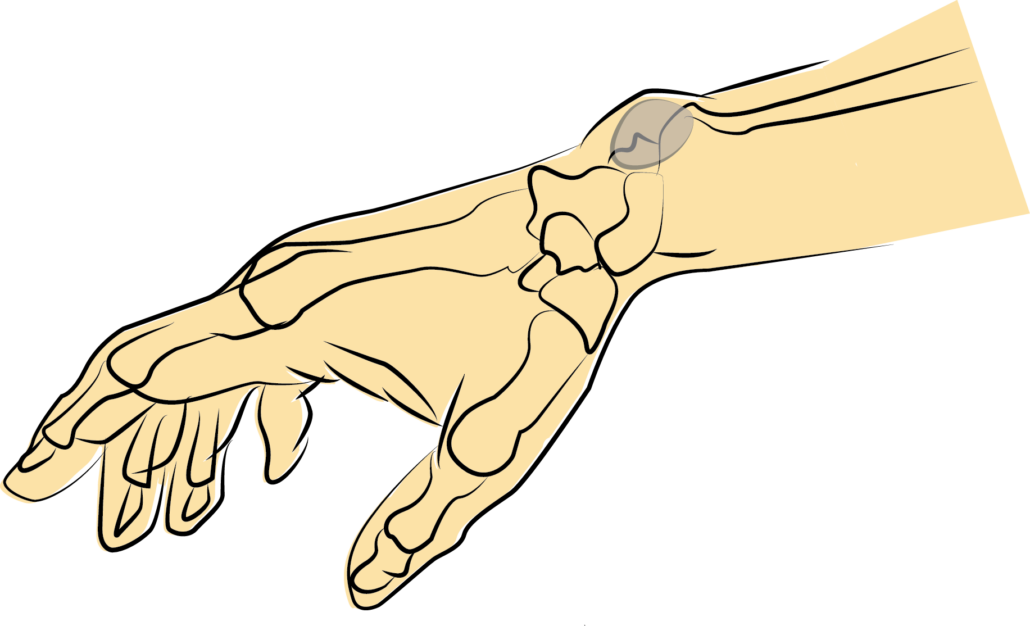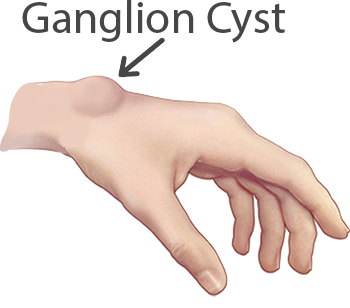
What is a ganglion cyst?
A ganglion cyst is a soft tissue swelling or lump that develops along the joints or tendons (tissue that connects muscles to bones). They are most commonly found on the back of hand or wrist and are typically round to oval in shape and are filled with a jellylike substance.
Ganglion cysts, however, may also occur in other areas such as feet and ankle. Ganglion cysts are the most common mass or lump to appear on back of the hand or wrist and in most cases they are harmless as they are noncancerous masses.
Learn More...Facts about ganglion cysts
- Ganglion cysts are found about three times more often in women than men.
- They are common particularly in women in their 30s and 40s.
- Seventy percent of all ganglion cysts occur in people between the ages of twenty to forty.
- Between sixty and seventy percent of all ganglions are dorsal wrist ganglions.
- Ganglion cysts are known to get larger or smaller and even go away completely on their own.
- Ganglion cysts can cause pain by pressing on neighboring structures.
- Ganglion cysts can get bigger and increasingly lumpy but don’t spread to other areas.
- The insides of ganglion cysts is a jellylike substance that is thick, sticky, clear and colorless.
- Depending on the size of the cyst a ganglion may feel firm or spongy.
- The constant motion of the hand or wrist keeps fluid pumped into the cyst and that fluid is trapped in a ganglion cyst.
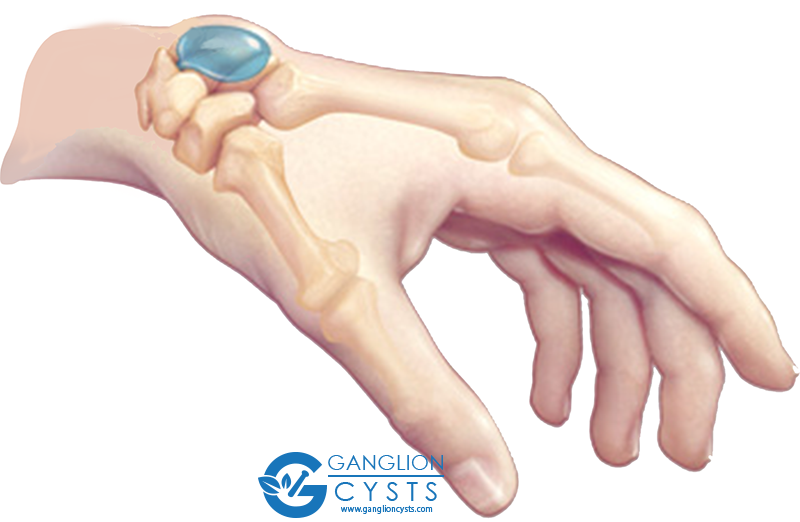
More than 200,000 cases of ganglion cysts are reported in the United States every year
Ganglion Cysts Signs and Symptoms
Ganglion cysts are characterized by their location, size and shape as well as presence or absence of pain. Ganglion cysts are the most common benign masses found at the back of hand or wrist.
First noticeable symptom is the mass or lump that may progressively increase in size. In other cases, ganglion cyst may be too small to be evident as a bump/mass but the pain due to pressing of nerve by the cyst might be the first symptom.
Ganglion cysts are soft to firm and they range in size roughly from 1-3 cm in diameter however they may progress in size to larger than 5cm. Ganglion cysts are immobile which means they cannot be freely moved in some or all directions under the skin.
The appearance of swelling or lump may be sudden and the size may fluctuate with cyst regressing in size totally at a time and later on originating again.
Apart from appearance, pain is the most noteworthy symptom associated with ganglion cyst. Following acute or repetitive trauma, most ganglion cysts may cause some degree of pain. Presence of pain in case of a ganglion cyst is chronic and is usually made worse by joint activity.
Pain is a constant feature when ganglion cyst presses an adjacent nerve and in that case the patient may also feel numbness, tingling or muscle weakness along nerve distribution. Sense of weakness in the finger may also arise as a result of the cyst connected to a tendon thus affecting its normal range of activity.
Pathophysiology (causes) of Ganglion cyst
The exact cause of ganglion cysts is not known. There are various theories to propose the mechanism of development of a ganglion cyst. One such theory suggests that ganglion cysts arise as a result of “herniation” as a result of out-pouching or distention of a weakened portion of a joint capsule or tendon sheath forming a mass. Similarly, it is suggested that trauma that repetitive use causes the break in joint or tissues leading to the formation of small cysts which can then join into a larger apparent lump. Damage to joint structures and even degeneration can be an inciting factor for lump formation due to leakage. The most conceivable theory is the presence of break or flaw in joint capsule or tendon sheath thus allowing the inside tissues to bulge out and form a ganglion cyst.
A ganglion cyst may either have only one lobule/cyst or multiple cysts may fuse to form an enlarged swelling on the dorsum of the hand. In other words, a ganglion cyst may either be uni-lobulated or multilobulated and in the latter case intervening septa are formed of connective tissue which separates lobes/cavities. Inside of the ganglion cyst contains a thick, slippery and sticky fluid similar to that found inside joint capsule thus explaining the origin of the cyst as out-pouching from the joint cavity.
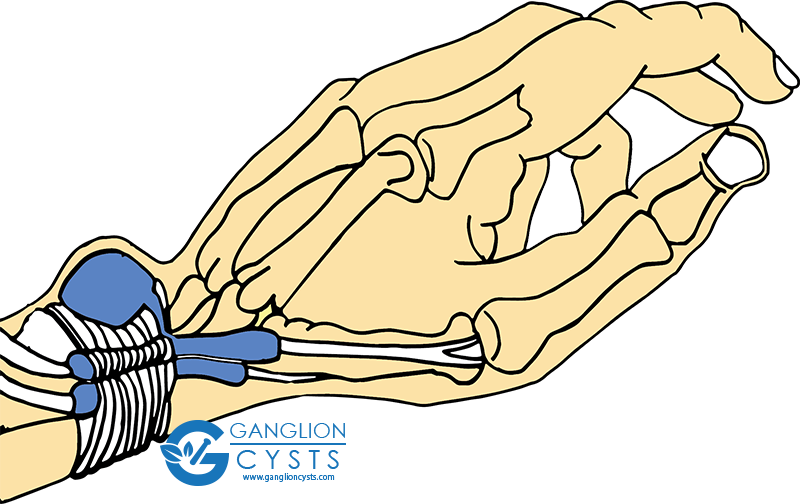
Ganglion cyston dorsal side of wrist located above the tendons
Regarding incidence of Ganglion cysts, they are more common among women and about 70% are found in people aged 20-40. Ganglion cysts can arise rarely in children less than 10 years of age. A ganglion cyst may look like a sac of liquid either firm or spongy hence named “cyst” and the contents may be a clear, colorless, thick, sticky or jellylike substance.
Ganglion cysts vary in size that may range in size from as small as pea to around 2.5cm in diameter. Sometimes, size of cyst increases with enhanced wrist movements and activity while inactivity or rest may result in reduced lump size. In some cases, location of cyst may interfere with normal joint movements.
Ganglion cyst originates from a joint or tendon with a stalk having a balloon like appearance. It outgrows its originating tissues/ structures such as joint linings, tendon, sheath or ligament. The cyst may contain the same fluid as present inside the joint cavity (synovial fluid). Ganglion cyst is usually non-mobile and is of benign nature.
Ganglion cysts are usually painless but when the cyst presses an adjacent nerve, regardless of the size of the cyst, it becomes painful. Moreover, pressing of the nerve may cause tingling, numbness or abnormal sensations along with muscle weakness.
A ganglion cyst has been identified to be an excess fluid from tendon or joint and is a sign of inflammation in underlying tendon, joint or ligament. Ganglion cyst of hand or wrist has been categorized roughly into four main types:
- Dorsal wrist ganglion
- Mucous cyst
- Volar wrist Ganglion
- Seed or Pulley Ganglion
Dorsal wrist ganglions are most common cysts that may develop on the back of hand or wrist while volar cysts appear on the front of hand or wrist. Mucous cysts are found just behind the nails arising from the last joint of fingers due to joint degeneration (arthritis) while “seed” ganglion appears at the base of fingers in the palm arising from tendons.

AGanglion cyst on dorsal side of wrist
Ganglion Cyst Risk factors
Although a ganglion cyst can arise in any individual there are certain risk factors that are established to increase the chances of acquiring these lumps.
Age and Gender: Ganglion cysts are more common among women particularly of age 20-40. They are rare in children less than 10 years of age.
Osteoarthritis: wear-and-tear arthritis in the finger joints near fingernails can predispose to the development of mucous cysts (a type of Ganglion cyst) in that location. Joint degeneration is an identified risk factor for the development of ganglion cyst.
Injury/Trauma of Joint or tendon: Joints or tendons suffering from repetitive trauma or previous injury are more susceptible to develop ganglion cyst.
Diagnosis
Important steps involved in the diagnosis of Ganglion cyst include:
- HISTORY
- PHYSICAL EXAMINATION
- INVESTIGATIONS
A ganglion cyst is easy to diagnose and in most cases diagnosis relies upon history and physical examination. Your healthcare provider would ask about the onset and duration of ganglion cyst. Also you’ll be asked about whether it changes in size, and whether it is painful or if there are other symptoms present.
Physical examination comprises of identifying the site, size, shape, mobility and consistency of the mass/lump. The cyst may be pinched to see the presence of pain and to feel the contents. A small torch may be used to see the trans-illumination of cyst (to differentiate it from a solid lump). Typically the diagnosis of ganglion cyst is obvious to an experienced clinician based on findings of physical examination.
In most cases the diagnosis of ganglion cyst is obvious and no clinical investigations are required. However, the most common initial test performed is the aspiration of the contents of cyst with the help of syringe. In case of ganglion cyst, it would reveal a thick, clear or translucent fluid.
Radiograph is sometimes performed to see the underlying structures and to differentiate between malignancy and benign disease. X-rays can also identify bony tumors and arthritis. X-rays are more commonly performed in older patients. X-rays are basically done to see dense structures such as bone. On the other hand, Ultrasound can help to differentiate between cystic and solid nature of mass. Ultrasonography can also determine the presence of blood vessels inside lump.
MRI is the most useful investigation but has a major drawback of high cost involved. MRI is rarely performed as a diagnostic investigation for ganglion cyst.
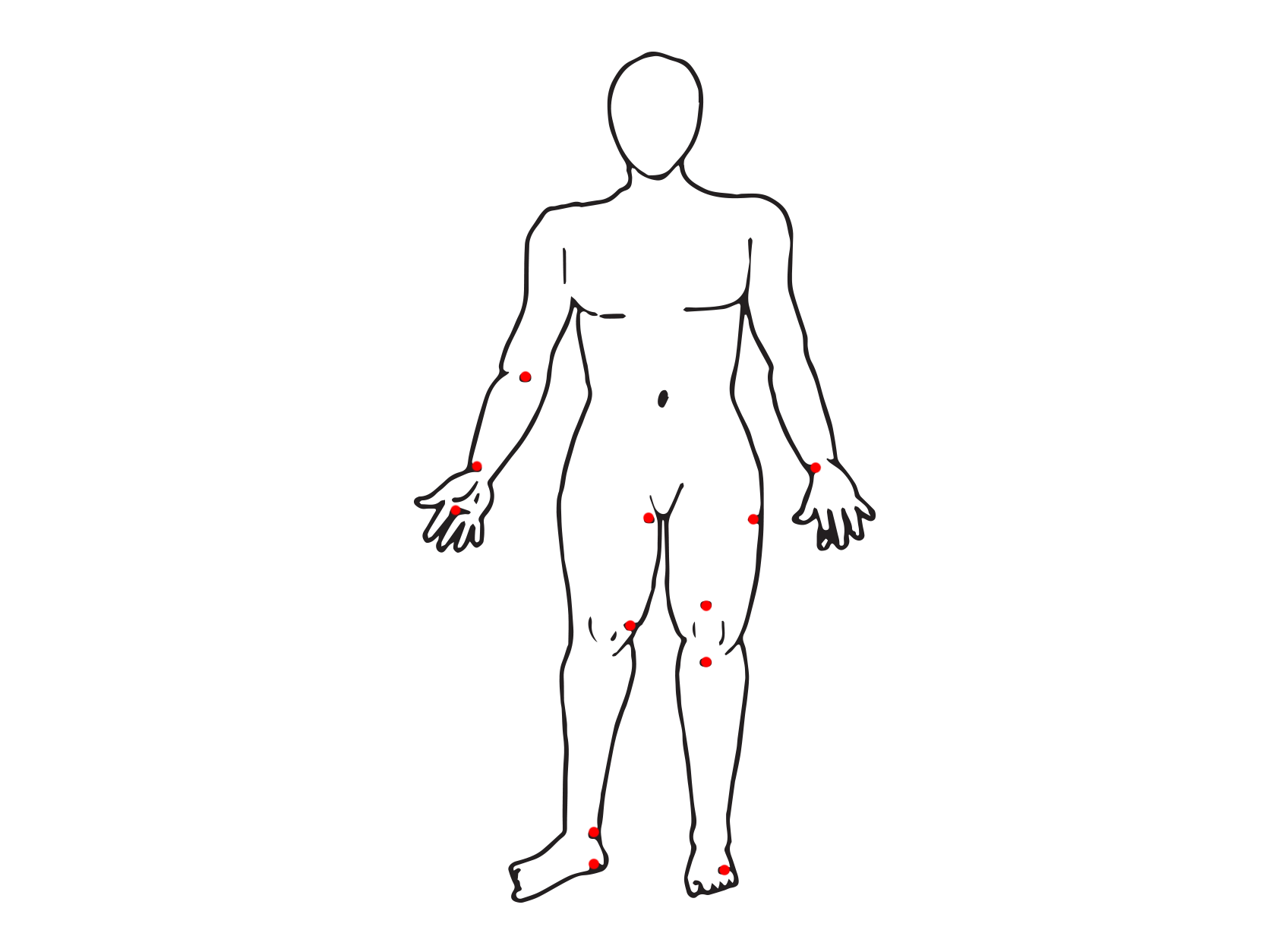
Most common locations of ganglion cysts
Managing the Bible Bump
In case of painless ganglion cysts causing no symptoms, no treatment is required. However, the cosmetic appearance of ganglion cysts is the major factor causing people to seek permanent treatment.
In older times, various home care interventions were used to treat ganglion cysts such as application of topical plaster, heat and various bandages. Ganglion cysts are also known as “bible cyst” as in past a heavy book was sometimes used to physically smash the cyst referred to as “Bible-Therapy”. However, nowadays these modalities of treating a ganglion cyst are discouraged because they have not been shown to keep the ganglion cysts from returning and could, in fact lead to further injury.
The management of ganglion cyst may be categorized as Non-Surgical or Surgical.
Non-Surgical Treatment For Ganglion Cysts:
Initial treatment of a ganglion cyst is not surgical and the doctor may recommend wait and watch policy. The various conservative approaches of treating ganglion cyst include the following:
Observation: Due to benign nature of ganglion cyst, it is suggested that the cyst may disappear with time. An initial wait-and-watch approach may be used for managing ganglion cyst particularly in cases where there are no symptoms.
Immobilization: Increased range of activity along the affected tendons or joints may result in increased size of the cyst and also causes enhanced pressure on nerves leading to pressure symptoms (pain, tenderness, numbness, tingling etc.). Immobilization of affected hand with the help of a wrist brace or splint may help in relieving the symptoms and decreasing the size of the cyst. However, long term use of a brace or splint can result in weakening of the muscles. Afterwards, physiotherapy and special exercises can be done to re-gain the full range of motion.
Aspiration/Injection: Aspiration is the drainage of fluid from the cyst with the help of a syringe. Aspiration procedures are most commonly done for the cysts found at the back of wrist. A needle is placed into the cyst after the area around ganglion has been numbed. The cyst is punctured and the fluid is withdrawn. One effective way is to concomitantly inject a steroid compound (causing anti-inflammatory effects) into the cyst and then immobilizing the wrist with splint. Multiple sessions of this aspiration/injection therapy done at definite intervals can result in regression of ganglion cyst.
However, this procedure has the drawback of recurrence of ganglion cyst as aspiration frequently fails to eliminate the ganglion “root” or connection to the joint or tendon sheath. Hence in majority of the cases, the ganglion cyst may relapse after an aspiration procedure.
Surgical Treatment:
Surgical removal is the most appropriate form of treatment of ganglion cyst as there are very few chances of recurrence after surgery. Surgery is recommended if symptoms are not relieved by non-surgical methods, or if the ganglion returns after aspiration. Similarly, surgical removal of the ganglion cyst is required in cases of painful mass, functional abnormalities when the dominant hand is involved or when numbness or tingling of the hand or fingers occurs as result of cyst pressing a nerve. The surgical procedure of removing a ganglion cyst is called EXCISION.
PROCEDURE: The operation is typically performed under local anaesthesia/general anaesthesia largely depending on the surgeon’s experience. A band, like a blood pressure cuff, is placed around the top of the arm. It is inflated (tightened) during the operation to reduce bleeding, which makes the operation easier and safer. It can be a little uncomfortable, but is almost always well tolerated for the 10-20 mins or so that it is inflated (this happens just before the surgeons starts the operation). Before that the arm is painted with an antiseptic with a pink dye in it. This is used to help minimise the risk of infection. The surgeon makes a transverse incision (i.e. across the back of the wrist) over the ganglion, and removes it. The “neck” of the ganglion sac is widened out to reduce the chance of it recurring. The skin is then stitched up with absorbable stitches. Sometimes the lining of the ganglion will be sent to the laboratory for analysis to confirm the diagnosis. As the diagnosis is usually so clear, it is not typically necessary. A supportive dressing is applied and the patient’s arm elevated. The total time in hospital is usually 1-2 hours.
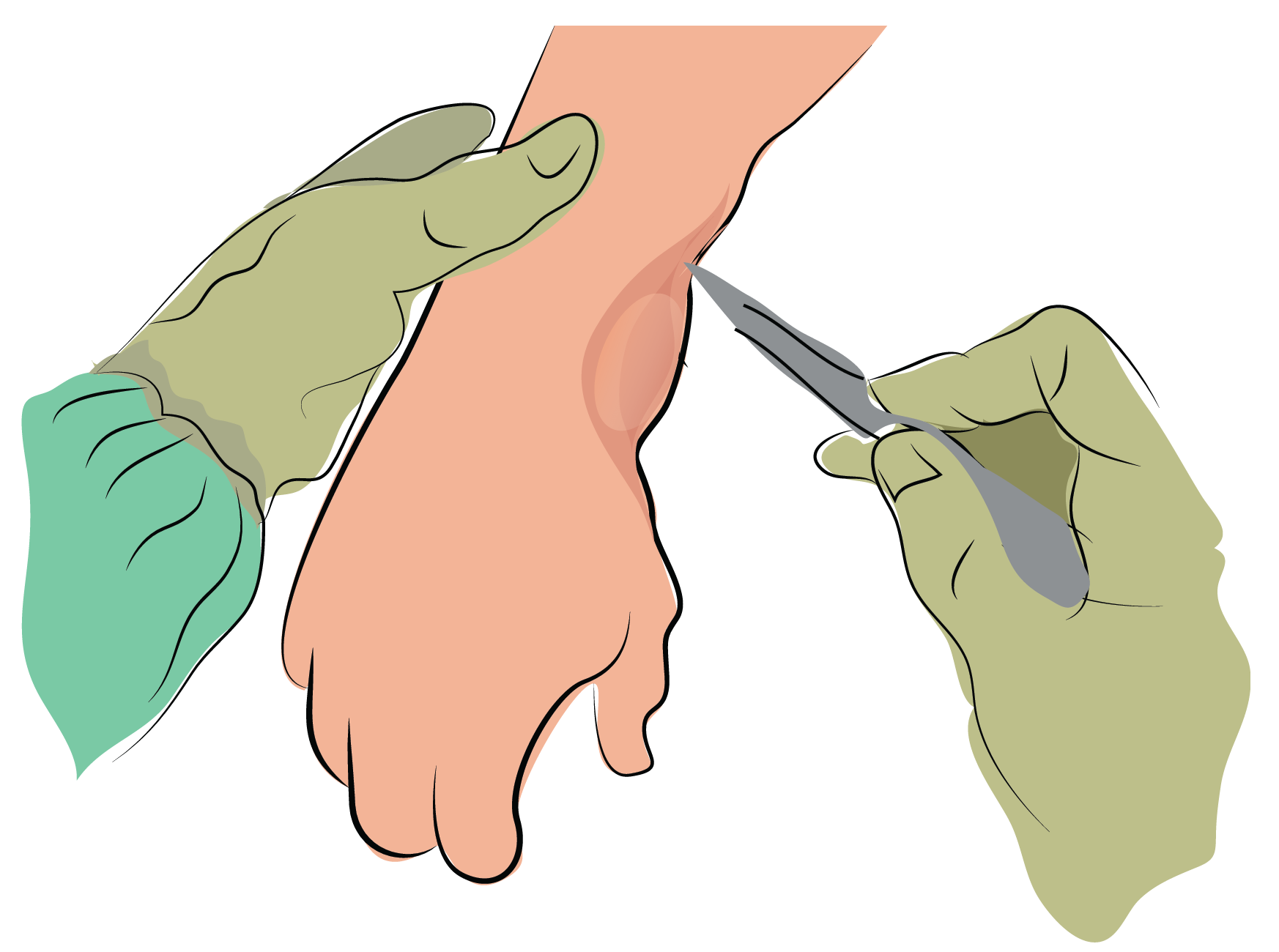
An incision is made over the dorsal ganglion cyst
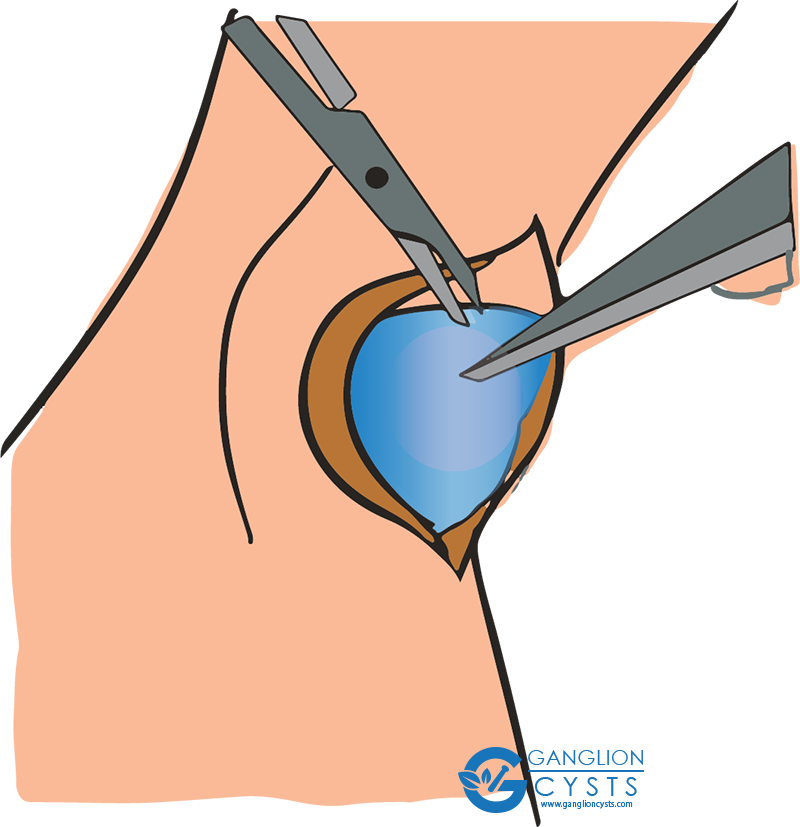
A titleThe dorsal ganglion cyst is excised
Surgical Excision of Ganglion Cyst is typically an outpatient procedure and the patients are able to go home after a period of observation in the recovery area. After the procedure, some tenderness, discomfort, and swelling may arise however it typically subsides. Application of braces or splint is not recommended for longer time periods. It usually takes 2 to 6 weeks after surgery to return to normal activity.

